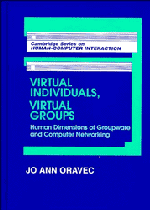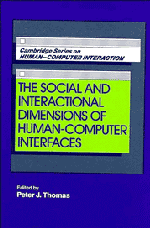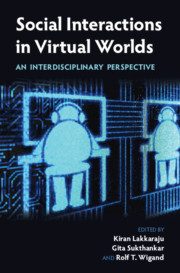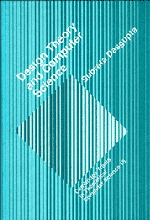Virtual Individuals, Virtual Groups
Designers, implementers, and users of computer network applications are all deeply involved in the processes of social and cultural change, whether or not they consciously and actively choose to consider these processes. Issues such as community and privacy, dependence and individualism are no longer simply the province of philosophers and social scientists; they are tightly interwoven in the design and use of network applications. Virtual Individuals, Virtual Groups explores the social dimensions of the powerful computing applications that are shaping our culture. It addresses design and theoretical issues relating to groupware and other applications of computer networks. It considers computer network applications in terms of the notions of genre and narrative, in a framework that is broadly applicable to the development of a wide range of computing and communication systems, such as virtual reality and multimedia.
- Focus on computer network applications in societal context and the context of other information communications technologies (such as video). Groupware involves wide ranges of media
- Emphasis on creation of new and influential kinds of entities associated with individuals and groups (such as computer agents)
- Outline of a theoretical and design perspective that gives developers tools for designing comprehensible and powerful applications
Reviews & endorsements
'This book is for serious reading and study. It is very readable and brilliantly thought through. The publication makes a huge body of work accessible to those of us who have time for only one book on the subject.' Ian Alexander, Computing
Product details
No date availableHardback
9780521454933
399 pages
261 × 184 × 35 mm
0.876kg
Table of Contents
- 1. Introduction
- 2. Virtual individuals and virtual groups
- 3. The shape of groups to come: Efforts to define, label, explain, and model collaborative activity
- 4. Shared resources and spaces in CSCW applications: lessons from the uses of desks, tables, whiteboards, office settings, and video
- 5. Cultural objects, technological dreams, and CSCW applications: Dependence, autonomy, and intellectual augmentation
- 6. Privacy, anonymity, agency: applications of computer networking and the development of social analogues
- 7. Toward a genre-responsive design approach for computing applications.





